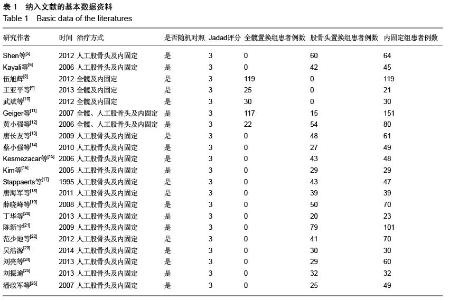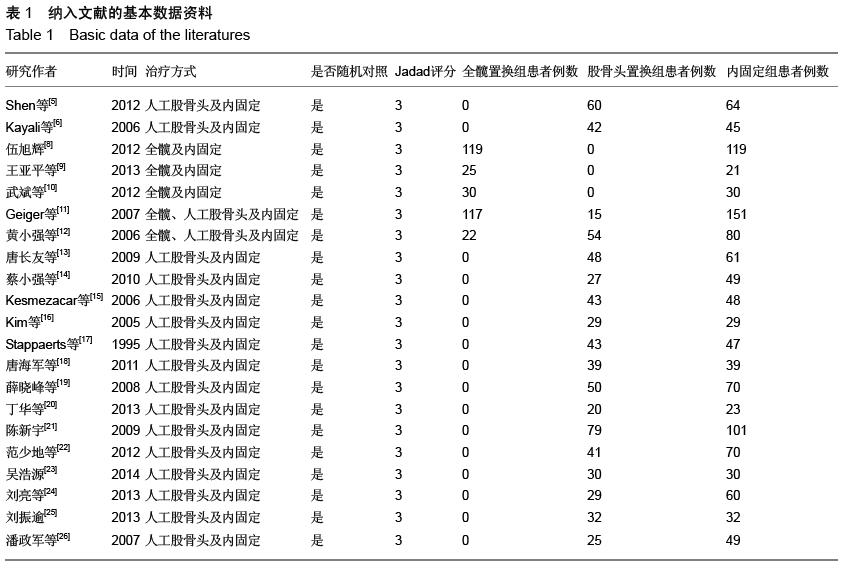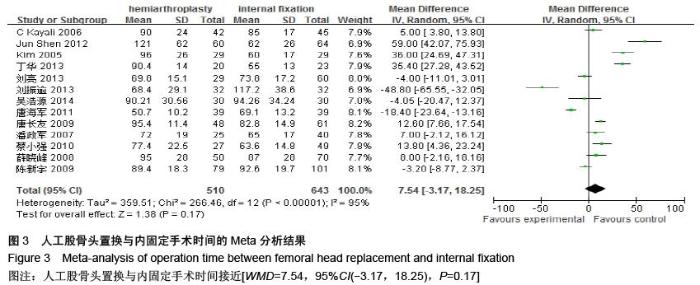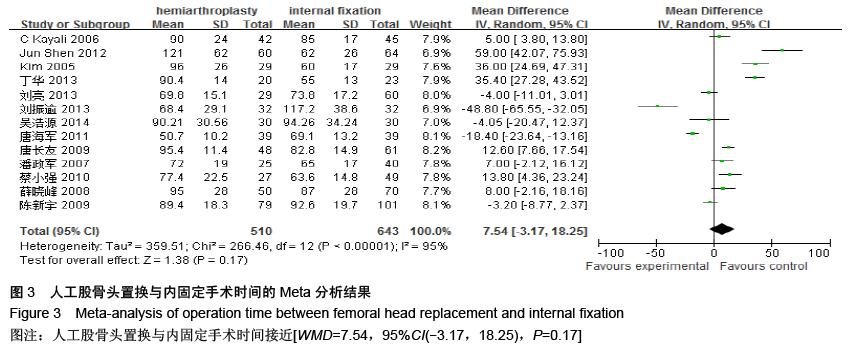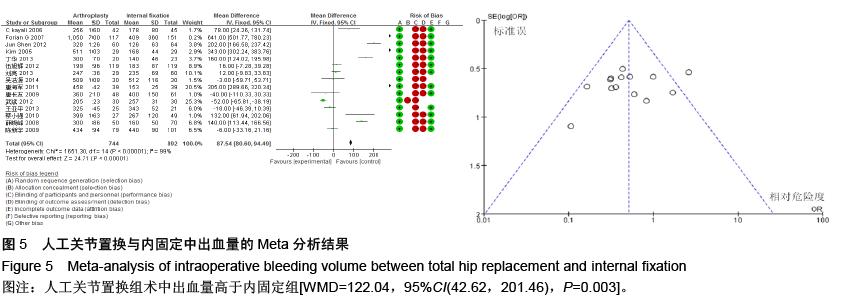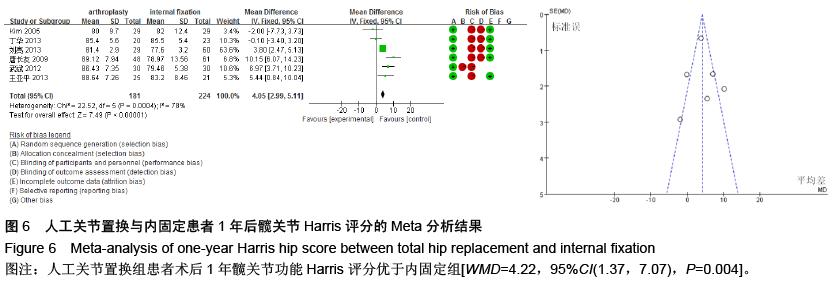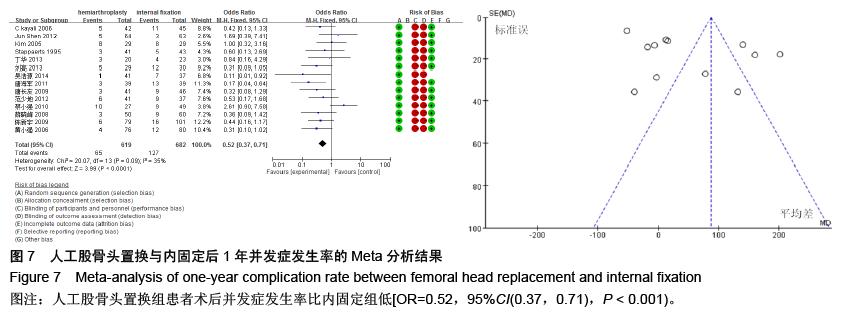| [1] 胥少汀,葛宝丰,徐印坎.实用骨科学[M].4版.北京:人民军医出版社,2012:947-948.[2] Ray NF, Chan JK, Thamer M, et al. Medical expenditures for the treatment of osteoporotic fractures in the United States in 1995: report from the National Osteoporosis Foundation. J Bone Miner Res. 1997; 12(1):24-35.[3] Fox KM, Magaziner J, Hawkes WG, et al. Loss of bone density and lean body mass after hip fracture. Osteoporos Int. 2000;11(1):31-35.[4] Haidukewych GJ, Berry DJ. Hip arthroplasty for salvage of failed treatment of intertrochanteric hip fractures. J Bone Joint Surg Am. 2003;85-A(5):899-904.[5] Shen J, Wang DL, Chen GX, et al. Bipolar hemiarthroplasty compared with internal fixation for unstable intertrochanteric fractures in elderly patients. J Orthop Sci. 2012;17(6):722-729. [6] Kayali C, Agus H, Ozluk S, et al. Treatment for unstable intertrochanteric fractures in elderly patients: internal fixation versus cone hemiarthroplasty. J Orthop Surg (Hong Kong). 2006;14(3):240-244.[7] Jadad AR, Moore RA, Carroll D, et al. Assessing the quality of reports of randomized clinical trials: is blinding necessary? Control Clin Trials. 1996;17(1):1-12.[8] 伍旭辉.PFNA和THA治疗老年性股骨粗隆间骨折的临床观察[J].中国医药导报,2012,9(36):85-92.[9] 王亚平,路通.人工髋关节置换与股骨近端髓内钉治疗股骨转子间骨折的比较[J].中国组织工程研究,2013, 17(52): 8961-8966.[10] 武斌,梁杰,杜远立,等.髋关节置换与动力髋螺钉内固定治疗高龄股骨粗隆间骨折疗效观察[J].中国矫形外科杂志, 2012,20(20):1900-1901.[11] Geiger F, Zimmermann-Stenzel M, Heisel C, et al. Trochanteric fractures in the elderly: the influence of primary hip arthroplasty on 1-year mortality. Arch Orthop Trauma Surg. 2007;127(10):959-966.[12] 黄小强,罗卓荆,廖永华,等.带大粗隆柄人工关节置换治疗高龄股骨粗隆间骨折76例[J].第四军医大学学报,2006, 27(5):450-451.[13] 唐长友,向忠,沈翔,等.股骨头置换与DHS内固定术治疗老年人股骨粗隆间粉碎性骨折的前瞻性对比研究[J].中国骨与关节损伤杂志,2009,24(9):778-780.[14] 蔡小强,邹天明,陈广祥,等.人工股骨头置换与动力髋螺钉内固定治疗高龄股骨粗隆间骨折临床对比分析[J].中国矫形外科杂志,2010,18(19):1602-1605.[15] Kesmezacar H, O?üt T, Bilgili MG, et al. Treatment of intertrochanteric femur fractures in elderly patients: internal fixation or hemiarthroplasty. Acta Orthop Traumatol Turc. 2005;39(4):287-294.[16] Kim SY, Kim YG, Hwang JK. Cementless calcar-replacement hemiarthroplasty compared with intramedullary fixation of unstable intertrochanteric fractures. A prospective, randomized study. J Bone Joint Surg Am. 2005;87(10):2186-2192.[17] Stappaerts KH, Deldycke J, Broos PL, et al. Treatment of unstable peritrochanteric fractures in elderly patients with a compression hip screw or with the Vandeputte (VDP) endoprosthesis: a prospective randomized study. J Orthop Trauma. 1995;9(4):292-297.[18] 唐海军,成文,倪增良.人工股骨头置换与内固定治疗股骨粗隆间骨折的疗效对比研究[J].中国现代医生, 2011, 49(25):50-52.[19] 薛晓峰,尹芸生,杜玉勇,等.人工股骨头置换与DHS治疗高龄股骨粗隆间骨折[J].实用骨科杂志,2008,14(1):4-7.[20] 丁华,章洪喜,袁即山,等.股骨近端髓内钉-螺旋刀片内固定与人工股骨头置换术治疗老年股骨转子间不稳定型骨折的疗效比较[J].生物医学工程与临床,2013,17(5):450-454.[21] 陈新宇.不同方法治疗高龄患者股骨粗隆间骨折比较[J].广州医学院学报,2009,37(3):1008-1836.[22] 范少地,刘剑,于杰.85岁以上股骨粗隆间骨折三种手术方式比较[J].实用骨科杂志,2012,11(18):976-978.[23] 吴浩源.人工关节置换术与内固定术治疗骨质疏松性不稳定股骨粗隆间骨折的对比分析[J].中国医学创新,2014, 11(2):29-30.[24] 刘亮,张星火,于振山,等.DHS和人工股骨头置换治疗高龄合并骨质疏松不稳定股骨粗隆间骨折的疗效分析[J].临床医学工程,2012,19(5):736-739.[25] 刘振逾.人工关节置换术与内固定术治疗老年粗隆间骨折64例临床观察[J].医学信息,2013,(27):756-757.[26] 潘政军,江渟,江华,等.人工股骨头置换与内固定治疗股骨转子间骨折疗效比较[J].临床骨科杂志,2007,10(6): 502-504. |
